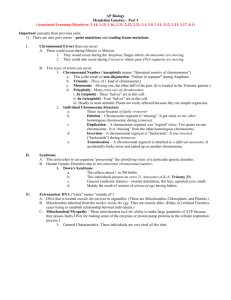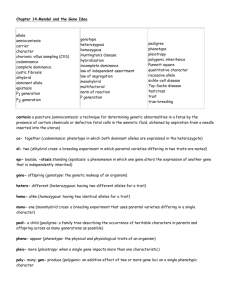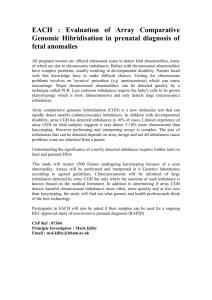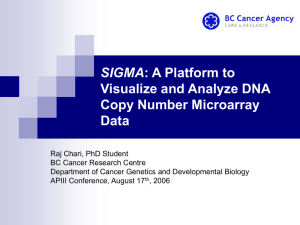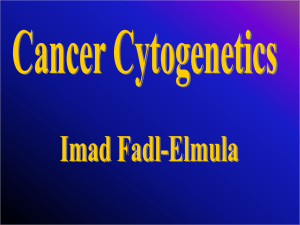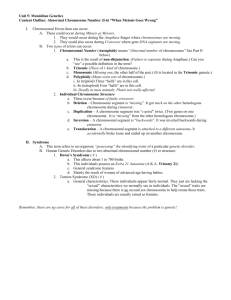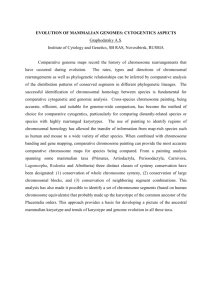Genetics Clinic - Michigan State University
advertisement
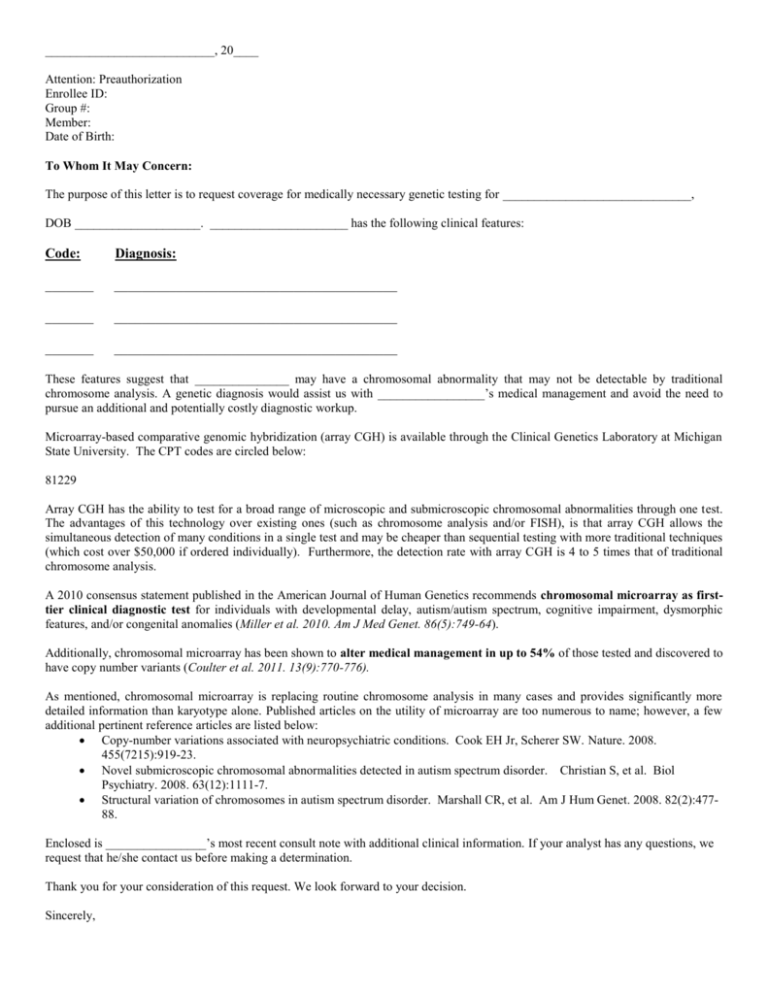
___________________________, 20____ Attention: Preauthorization Enrollee ID: Group #: Member: Date of Birth: To Whom It May Concern: The purpose of this letter is to request coverage for medically necessary genetic testing for ______________________________, DOB ____________________. ______________________ has the following clinical features: Code: Diagnosis: _______ _________________________________________ _______ _________________________________________ _______ _________________________________________ These features suggest that _______________ may have a chromosomal abnormality that may not be detectable by traditional chromosome analysis. A genetic diagnosis would assist us with _________________’s medical management and avoid the need to pursue an additional and potentially costly diagnostic workup. Microarray-based comparative genomic hybridization (array CGH) is available through the Clinical Genetics Laboratory at Michigan State University. The CPT codes are circled below: 81229 Array CGH has the ability to test for a broad range of microscopic and submicroscopic chromosomal abnormalities through one test. The advantages of this technology over existing ones (such as chromosome analysis and/or FISH), is that array CGH allows the simultaneous detection of many conditions in a single test and may be cheaper than sequential testing with more traditional techniques (which cost over $50,000 if ordered individually). Furthermore, the detection rate with array CGH is 4 to 5 times that of traditional chromosome analysis. A 2010 consensus statement published in the American Journal of Human Genetics recommends chromosomal microarray as firsttier clinical diagnostic test for individuals with developmental delay, autism/autism spectrum, cognitive impairment, dysmorphic features, and/or congenital anomalies (Miller et al. 2010. Am J Med Genet. 86(5):749-64). Additionally, chromosomal microarray has been shown to alter medical management in up to 54% of those tested and discovered to have copy number variants (Coulter et al. 2011. 13(9):770-776). As mentioned, chromosomal microarray is replacing routine chromosome analysis in many cases and provides significantly more detailed information than karyotype alone. Published articles on the utility of microarray are too numerous to name; however, a few additional pertinent reference articles are listed below: Copy-number variations associated with neuropsychiatric conditions. Cook EH Jr, Scherer SW. Nature. 2008. 455(7215):919-23. Novel submicroscopic chromosomal abnormalities detected in autism spectrum disorder. Christian S, et al. Biol Psychiatry. 2008. 63(12):1111-7. Structural variation of chromosomes in autism spectrum disorder. Marshall CR, et al. Am J Hum Genet. 2008. 82(2):47788. Enclosed is ________________’s most recent consult note with additional clinical information. If your analyst has any questions, we request that he/she contact us before making a determination. Thank you for your consideration of this request. We look forward to your decision. Sincerely,
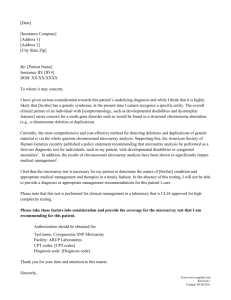
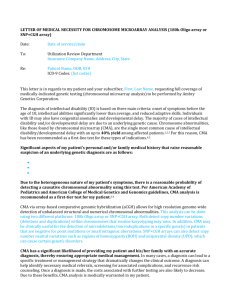
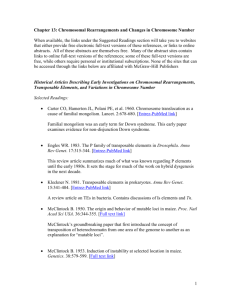
![[Date] - Quest Diagnostics](http://s3.studylib.net/store/data/005839747_1-f7115239afa724b4c691b917d7e402b8-300x300.png)
